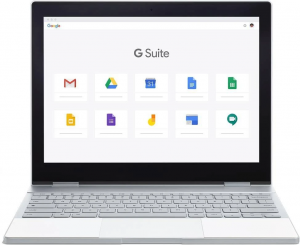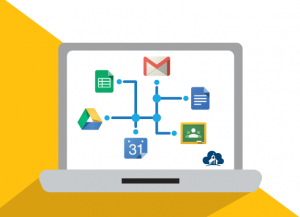 With an increasing level of Coronavirus / COVID-19 infections transmitting via “community spread”, many schools are planning for the likelihood of closings that could range from days to weeks. Distance learning and virtual classrooms can mitigate the impact. The challenge is getting the systems, resources, and training in place quickly, before they are needed. Here is brief guide to planning and execution.
With an increasing level of Coronavirus / COVID-19 infections transmitting via “community spread”, many schools are planning for the likelihood of closings that could range from days to weeks. Distance learning and virtual classrooms can mitigate the impact. The challenge is getting the systems, resources, and training in place quickly, before they are needed. Here is brief guide to planning and execution.
Understand the Experience
Virtual learning is not the same educational experience as a live classroom. When looking to educate students at home, do not expect teachers to live stream lessons and manage feedback and responses via chat or even video conference. While this approach can work for meeting, it is unrealistic to expect that students will have the ability to participate or that teachers will be comfortable presenting and managing feedback.
For districts that have already created online learning systems for “alternate learning days”, most assignments take the form of assigned reading, videos, or activities paired with a means of demonstrating execution and understanding. Online quizzes, writing assignments, photo submissions, etc. are all ways that students can demonstrate they have completed the work and understand the materials.
With so many schools using Google Classroom, it is important to remember that Google Classroom is a tool that coordinates materials and activities between teachers and students. Parents generally do not have accounts or access. Successful online learning platforms provide a portal for parents and students to find and locate their students’ teachers and the materials.
Ensure Your District is Ready
Before launching a virtual learning system, you want to make sure your district is ready.
- Do you have the policies and procedures in place to launch online/remote learning?
- Several states have specific requirements.
- You may need your School Board or governing body to vote in policies to comply with state laws and regulations
- Do students have an appropriate device they can work on? If you do not have a 1:1 program and are relying on students to use home computers, you should survey your population to ensure that not only is there an appropriate device at home, but the student has sufficient access.
- Parents may be working from home and need the computer
- Some families will have multiple children vying for computer time
- Consider having devices available for loan
- Do families and students have appropriate Internet access?
- Depending on your socioeconomic mix (and geographical location), many families’ primary Internet access may be via cell phone or low-speed connection.
- Consider providing cellular hot-spot devices to families without adequate Internet service (you may be able to add these to existing E-Rate funded programs for cellular data services). Remember that many families will have multiple students and/or parents working from home.
- Guide teachers on lesson methods. Video may not be a great option if most students will have difficulty streaming
- Is Google Classroom, or an equivalent tool, in place for all classrooms? Are teachers and students familiar and comfortable using the platform?
- Now is the time to verify that every classroom or class is setup and that students and faculty can assess and use the tool. It is hard to provide access codes and help students “get in” remotely; spend some class time verifying everyone will be able to work.
- Are teachers comfortable using the online tools?
- Most districts using G Suite for Education, as an example, have varying levels of adoption. Some teachers are more comfortable using features such as live chat, interactive comments, and online assessments and automatic grading. Faculty that are not using these features need to learn and practice before these tools become a necessity.
- Many teachers use online learning tools outside of Google Classroom and G Suite / Google Docs. Faculty should share tools they are using for quizes, study guides, flashcards, etc. so that teachers have a library of tools. Identify teachers that can help others learn and use these tools to create a support network.
- Do you have a portal that guides parents and students?
- A simple portal, organized by school, grade, and/or subject matter with a page for each teacher/class provides parents and students with an easy way to navigate and access the materials for each teacher or class.
- Beyond links to the Google Classroom pages, teacher/class pages can include links to other resources, such as:
- Online reading assignments
- Videos
- Other learning apps
- Kahn Academy lessons
- You can create a simple portal system in Google Sites or, more easily via Google Drive using tools like OverDRIVE.
- Set clear expectations
- Teachers and staff should understand that remote/alternate learning days are full school days
- Teachers should be working a full day equivalent to being in school, even if the hours and timing are different.
Plan Lessons Carefully
Preparing lessons for online and remote learning differs from prep for a live classroom.
- Districts should set guidelines for how long each lesson should run. Typically, this is done by grade range with younger students having shorter assignments.
- Remember that teachers are not there to engage and keep students focused.
- Asking a 3rd grader to work independently for 40 minutes may not be a realistic expectation.
- Break work into smaller segments.
- Create guidelines for total time on “school work” for each day, knowing that work for each class or subject will add up.
- Take advantage of multiple learning modalities.
- Deploy a mix of reading, videos, forms, writing, etc. to keep students engaged and to allow for individual learning styles and strengths
- Design lessons children can do on their own
- Do not assume that parents, if present, will have the time or ability to facilitate the process or help with the work.
Communicate and Support
Students, and parents, will have questions and will need help.
- Make sure students and parents have, or can easily find, teacher email addresses and, if appropriate phone numbers.
- Teachers should set and publish blocks of time each day when they are available via live chat (and, if possible, video chat) to assist students with questions and assignments.
- Teachers should monitor and respond to questions via email throughout the day within a reasonable amount of time. For a student struggling to understand something, an hour to get a question answered feels like an eternity.
- Teachers should publish times when they will NOT be available for live chat and will NOT be answering emails. It is fair and necessary for teachers to set expectations and boundaries.
- If student devices and bandwidth allow, schedule some live group video meetings to allow students and teachers to see each other, interact, and engage.
Be Equitable
Equity goes beyond making sure students have devices and adequate access. Students with special accommodations in the classroom or school setting will need comparable accommodations when working remotely. Providing an equitable learning experience for students with specific needs and support is a major challenge. And while it may not be possible to recreate in-school supports, you can take steps to ensure sufficient supports or alternative programs are in place for most students.
Remember Your Specials
Physical education, art, and music are an important part of your students’ day, even if they are learning from home.
- Assign physical activity for students and have them provide a photo/video or parent note to confirm completion. One district we work with provided 15 minute fitness videos for students to do and counted shoveling snow as an activity. Students submitted a picture or parents submitted a confirmation form.
- Ask students in general music classes to listen to music and answer a few short questions.
- For students in choral or instrumental groups, assign practice pieces. Periodically ask for videos or other evidence of their efforts.
Monitor Program Effectiveness
Regardless of the amount of preparation, resources, and training you put in place, you will have issues and challenges.
- Actively solicit feedback from students, teachers, staff, and parents about your online learning system and processes.
- Learn what is working and where improvements, guidance, or changes are necessary
- Respond to feedback appropriately and quickly, even if the response is “We understand the issue, but do not have a solution yet.”
If parents, students, and teachers trust that their issues and concerns are being heard and will be addressed, the entire learning community will be more tolerant and forgiving as issues do arise.
Ask for Help
Do not forget to ask for help. Reach out to districts in your area that already have online learning systems and policies in place. Most are happy to share what they have and what they’ve learned.
Contact us. No kidding, We are here to help. Training, support, networking, or resources. Take advantage of our expertise and our network of resources.

 With the onset of COVID-19, schools and districts scrambled to move to remote and hybrid learning models. Demand for Chromebooks, netbooks, cameras, and other accessories skyrocketed. At the same time, the pandemic severely disrupted the supply chains. Manufactures struggled to get components from suppliers, to staff and run their assembly lines, and to ship product to customers.
With the onset of COVID-19, schools and districts scrambled to move to remote and hybrid learning models. Demand for Chromebooks, netbooks, cameras, and other accessories skyrocketed. At the same time, the pandemic severely disrupted the supply chains. Manufactures struggled to get components from suppliers, to staff and run their assembly lines, and to ship product to customers. On March 9, 2021, the list price for Chrome Education Upgrade (aka Chrome Management License/Service) will increase from $30 per device to $38 per device. As key component of your
On March 9, 2021, the list price for Chrome Education Upgrade (aka Chrome Management License/Service) will increase from $30 per device to $38 per device. As key component of your 
 G Suite Enterprise for Education Savings
G Suite Enterprise for Education Savings
 With an increasing level of Coronavirus / COVID-19 infections transmitting via “community spread”, many schools are planning for the likelihood of closings that could range from days to weeks. Distance learning and virtual classrooms can mitigate the impact. The challenge is getting the systems, resources, and training in place quickly, before they are needed. Here is brief guide to planning and execution.
With an increasing level of Coronavirus / COVID-19 infections transmitting via “community spread”, many schools are planning for the likelihood of closings that could range from days to weeks. Distance learning and virtual classrooms can mitigate the impact. The challenge is getting the systems, resources, and training in place quickly, before they are needed. Here is brief guide to planning and execution. Given the demand and need to improve your protection from the devastating impact of ransomware, crypto attacks, and other forms of cyber attacks we are extending the Advanced Threat Protection Priority Opt-in discount period through March, 2020. We understand that adding a service, even a critical service, impacts your budget and costs. Our Priority Opt-In discounts, and other measures (see below), intend to minimize the impact.
Given the demand and need to improve your protection from the devastating impact of ransomware, crypto attacks, and other forms of cyber attacks we are extending the Advanced Threat Protection Priority Opt-in discount period through March, 2020. We understand that adding a service, even a critical service, impacts your budget and costs. Our Priority Opt-In discounts, and other measures (see below), intend to minimize the impact. On January 22, 2020, Google is informing all Chrome Education Upgrade (aka Chrome Management Service) users that that perpetual per-device
On January 22, 2020, Google is informing all Chrome Education Upgrade (aka Chrome Management Service) users that that perpetual per-device 